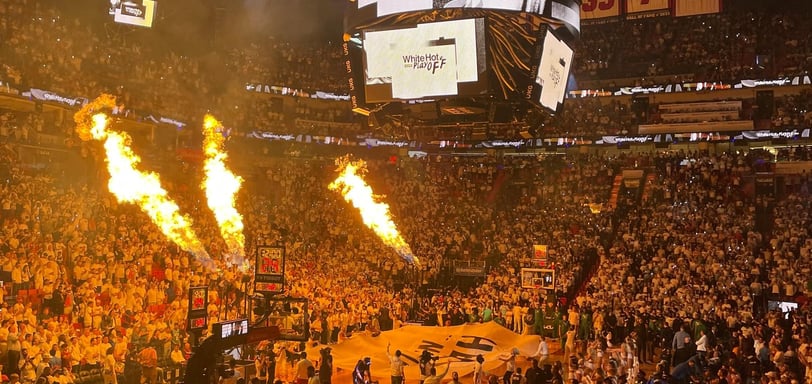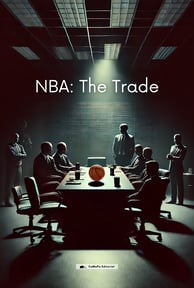Understanding NBA Trades: Salary Matching, Draft Picks, and Strategic Implications
Understanding NBA Trades: Salary Matching, Draft Picks, and Strategic Implications. NBA trades are a dynamic and multifaceted aspect of the league, blending financial rules, strategic planning, and competitive aspirations.
SPORT
Camapa Editorial
12/17/20246 min read


Trades are a fundamental component of the National Basketball Association (NBA), shaping team rosters and competitive dynamics. The intricacies of NBA trades, however, extend far beyond the mere exchange of players. The process involves complex rules surrounding salary matching, the inclusion of draft picks, and strategic considerations that teams must navigate to comply with league regulations and achieve their objectives. This article delves into the particularities of NBA trades, examining their rules and broader implications.
Additionally, the book "NBA: The Trade" written and edited by the publishing house CAMAPA, perfectly explains the mechanisms and inner workings of NBA trades, breaking down in detail the 25 most significant trades in the league's history, offering invaluable insights into their impact and context.
The Mechanics of NBA Trades
At its core, an NBA trade is the exchange of assets between two or more teams. These assets typically include players, draft picks, and sometimes cash considerations. While trades often involve two teams, multi-team trades—in which three or more teams participate—are not uncommon. The NBA’s collective bargaining agreement (CBA) governs the rules for trades, ensuring financial parity, competitive balance, and fairness among teams. Understanding these mechanisms requires a grasp of both the financial and competitive frameworks underpinning the league.
In addition to the exchange of assets, trades often involve a negotiation process that can span weeks or even months. Teams must align their strategies, evaluate potential risks, and comply with the league’s regulations. This makes the trade market a dynamic and unpredictable element of the NBA’s operational landscape.
Salary Matching: A Key Component
One of the most critical aspects of NBA trades is the league’s salary cap system, which limits the total amount a team can spend on player salaries. To maintain financial balance and prevent wealthier teams from accumulating all-star rosters, the NBA enforces salary matching rules for trades.
Salary Matching in Practice:
Teams operating above the salary cap must match incoming and outgoing salaries within a defined range.
For trades involving higher-salaried players, the outgoing salary must generally match the incoming salary within 125% plus $100,000. For example, if a team trades a player with a $10 million salary, they can receive a player (or combination of players) earning up to $12.6 million in return.
Exceptions to the Rule:
Teams under the salary cap are not subject to the same restrictions, as they can absorb salaries using their cap space. This provides more flexibility for rebuilding teams looking to acquire assets without stringent financial constraints.
The CBA includes exceptions such as the Mid-Level Exception (MLE), the Bi-Annual Exception (BAE), and trade exceptions, which allow teams to maneuver around strict salary-matching requirements.
Luxury Tax Implications:
Teams exceeding the luxury tax threshold—a set amount above the salary cap—incur additional financial penalties, making trades that reduce salary commitments particularly attractive.
Luxury tax penalties escalate based on repeat offenses, compelling teams to weigh the cost of maintaining expensive rosters against the potential benefits of competitive success.
The Role of Draft Picks in Trades
Draft picks are another valuable asset that teams often include in trades. The NBA Draft allows teams to select new talent, typically from college or international leagues, and is a crucial mechanism for roster-building.
Trading Draft Picks:
Teams can include future draft picks in trades, but the league’s "Stepien Rule" prohibits trading consecutive future first-round picks. Named after former Cleveland Cavaliers owner Ted Stepien, this rule prevents teams from jeopardizing their long-term prospects by overcommitting their draft capital.
Teams can trade second-round picks with fewer restrictions, making these assets frequently included as "sweeteners" in deals. Second-round picks, though often undervalued, have produced significant talent in league history, demonstrating their strategic importance.
Protections on Picks:
Draft picks are often traded with protections, meaning the original team retains the pick if it falls within a certain range. For example, a pick may be "lottery-protected," meaning the team keeps it if it falls within the top 14 selections.
Protected picks add complexity to trades, as their eventual conveyance depends on future outcomes, often involving multiple contingencies. This introduces layers of uncertainty, influencing how teams value protected picks versus unprotected ones.
Pick Swaps:
Teams may also negotiate pick swaps, allowing them to exchange draft positions in a given year. This mechanism enables teams to secure better draft positioning without losing outright ownership of a pick. Pick swaps, though less common than outright trades, often reflect nuanced strategies that prioritize incremental advantages.
Draft picks are not only valuable for acquiring talent but also serve as bargaining chips in negotiations. Teams aiming to build sustainable success often hoard draft capital, leveraging it to acquire young talent or as trade currency for established players.
Strategic Considerations in Trades
NBA teams approach trades with a mix of short-term goals and long-term strategies. Trades are rarely straightforward transactions; they require careful analysis of roster needs, financial constraints, and future implications.
Contending Teams:
Teams in contention for a championship often use trades to acquire established players who can contribute immediately. In these scenarios, future draft picks and young prospects become expendable assets. This win-now mentality prioritizes short-term success over long-term flexibility.
These trades are typically driven by a desire to complement existing stars, address positional weaknesses, or add depth for a playoff run. Recent examples include blockbuster moves aimed at pairing superstars to enhance championship aspirations.
Rebuilding Teams:
Rebuilding teams focus on acquiring future assets, such as young players and draft picks, while shedding veteran contracts that do not align with their timeline. This approach often involves trading established players to contending teams in exchange for developmental prospects or financial relief.
Salary dumps—where a team trades a player for minimal return to clear cap space—are common among rebuilding franchises. These trades allow teams to reset their financial commitments and create flexibility for future acquisitions.
Balancing Risk and Reward:
Trades involve inherent risks, as player performance, injuries, and team chemistry can dramatically impact outcomes. Even the most well-intentioned trades can backfire if unforeseen factors arise.
General managers must weigh the short-term benefits of a trade against its potential long-term consequences, particularly when trading draft picks or young talent. This balancing act underscores the strategic depth required in trade negotiations.
Multi-Team Trades and Complexity
While two-team trades are the norm, multi-team trades add layers of complexity and negotiation. These trades often occur when:
A team lacks the direct assets needed to complete a trade and involves a third party to facilitate the deal.
Teams seek to address multiple needs simultaneously, such as adding a star player while offloading an undesirable contract.
Multi-team trades require precise coordination to ensure all parties comply with the CBA’s rules and achieve mutually beneficial outcomes. These trades often involve intricate financial calculations and legal approvals, adding to their complexity.
Examples of Notable Trades
Several high-profile trades have shaped NBA history, illustrating the significance of trade rules and strategic considerations:
The James Harden Trade (2021):
A four-team trade involving the Houston Rockets, Brooklyn Nets, Indiana Pacers, and Cleveland Cavaliers saw James Harden move to Brooklyn. The trade exemplified the complexity of multi-team deals and the use of draft picks and salary matching.
The transaction highlighted the importance of aligning multiple objectives, such as acquiring star talent and maintaining roster depth.
The Paul George Trade (2019):
The Los Angeles Clippers acquired Paul George from the Oklahoma City Thunder, giving up a record haul of draft picks and pick swaps. The trade highlighted the premium placed on star players and the willingness of teams to sacrifice future assets for immediate contention.
The Kevin Garnett and Paul Pierce Trade (2013):
The Boston Celtics traded Garnett and Pierce to the Brooklyn Nets for a package of players and draft picks. The deal ultimately backfired for the Nets, as the traded picks became high-value selections, underscoring the risks of trading unprotected draft picks.
Emerging Trends in NBA Trades
As the NBA evolves, so do its trade dynamics. Recent trends include:
Increased Player Empowerment:
Players have gained more influence over trade destinations, often leveraging their status to force trades to preferred teams. This trend raises questions about team control versus player autonomy. Star players’ ability to dictate terms has transformed trade dynamics, empowering players while challenging team management.
Data-Driven Decision Making:
Teams increasingly rely on analytics to evaluate trade proposals, assess player impact, and project future performance. Data-driven approaches have refined trade strategies and enhanced decision-making. Advanced metrics and predictive modeling now play a central role in shaping trade strategies.
Rise of "Superteams":
Trades play a central role in forming superteams, where multiple star players join forces. The pursuit of superteams has led to more aggressive trade strategies and heightened competition for top talent. This trend reflects a shift in team-building philosophies, prioritizing star power over depth.
Conclusion
NBA trades are a dynamic and multifaceted aspect of the league, blending financial rules, strategic planning, and competitive aspirations. Salary matching, the inclusion of draft picks, and adherence to CBA regulations create a challenging landscape for teams. Successful trades require balancing immediate needs with long-term goals, careful analysis of assets, and compliance with intricate rules. As the league continues to evolve, trades will remain a critical tool for shaping the NBA’s future, ensuring excitement and unpredictability for players and fans alike. Beyond their technicalities, trades epitomize the drama and strategy that make the NBA a captivating spectacle.
Camapa Editorial
camapaeditorial@gmail.com
© 2024. All rights reserved.
Our mission at Camapa Editorial is to explore, analyze, and present insights within these fields in a way that both educates and inspires further inquiry. Whether delving into groundbreaking scientific discoveries, examining the intricacies of athletic performance and emerging sports, or exploring the multifaceted world of entertainment, Camapa Editorial aims to be a trusted guide in your journey of learning and exploration.


